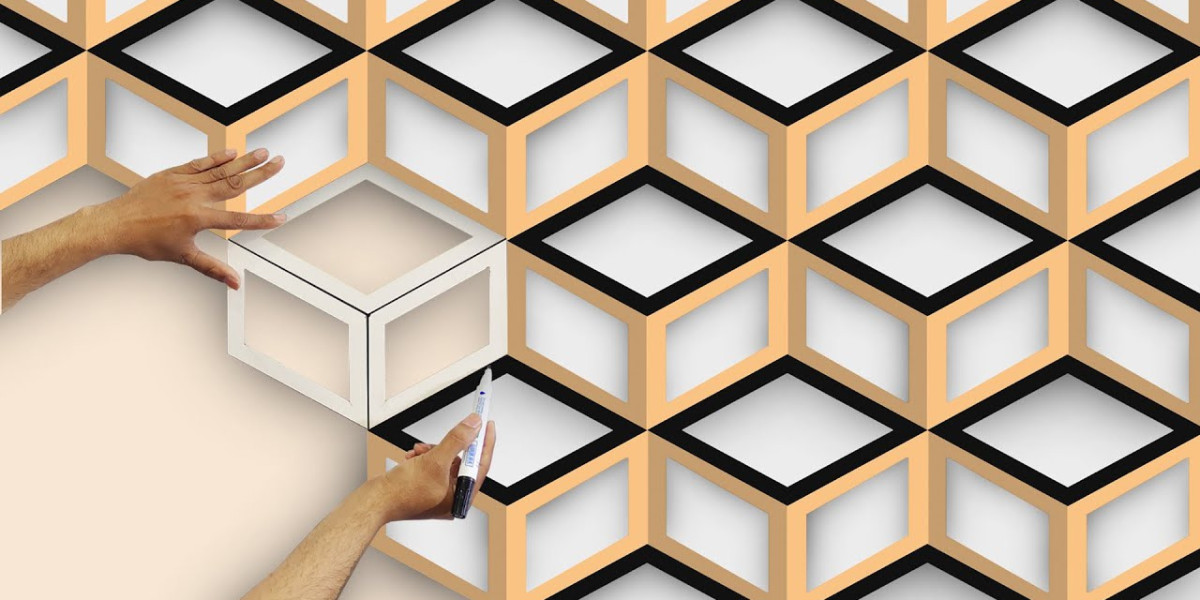3D design is a multifaceted field that encompasses the creation of three-dimensional objects and environments using specialized software and techniques. From visualizing architectural structures to developing characters for video games, 3D Design plays a crucial role in a wide range of industries. This comprehensive guide delves into the various aspects of 3D design, including its applications, tools, processes, and emerging trends.
What Is 3D Design?
3D design involves the creation of three-dimensional models and visualizations using digital tools. Unlike 2D design, which is limited to flat images, 3D design adds depth and dimension to objects, allowing for a more realistic representation of physical items. 3D design can be used for various purposes, including animation, product design, virtual reality, and more.
Applications of 3D Design
1. Architecture and Urban Planning
- Description: 3D design is widely used in architecture and urban planning to create detailed models of buildings and landscapes. It helps architects and planners visualize and refine their designs before construction begins.
- Tools: Software such as AutoCAD, SketchUp, and Revit are commonly used for architectural 3D design.
2. Product Design
- Description: In product design, 3D modeling is used to create prototypes and simulations of new products. This allows designers to test functionality, aesthetics, and ergonomics before manufacturing.
- Tools: CAD (Computer-Aided Design) software like SolidWorks and Fusion 360 are popular choices for product design.
3. Entertainment and Media
- Description: The entertainment industry relies heavily on 3D design for creating visual effects, animations, and character models in movies, video games, and virtual reality experiences.
- Tools: Software such as Blender, Maya, and 3ds Max are frequently used in animation and game design.
4. Healthcare and Medical Imaging
- Description: In healthcare, 3D design is used to create detailed models of anatomical structures and simulate medical procedures. This aids in diagnosis, surgical planning, and patient education.
- Tools: Medical imaging software like 3D Slicer and OsiriX are used for creating and analyzing 3D models from medical scans.
5. Fashion and Apparel
- Description: 3D design in fashion allows designers to create virtual prototypes of clothing and accessories. This enables faster design iterations and better visualization of how garments will look and fit.
- Tools: Software such as Clo3D and Marvelous Designer are used for 3D garment design.
The 3D Design Process
1. Conceptualization
- Description: The design process begins with conceptualization, where ideas and concepts are generated based on the project's requirements and goals. This stage involves brainstorming, sketching, and defining the design objectives.
- Activities: Creating mood boards, reference images, and initial sketches to visualize the design concept.
2. Modeling
- Description: In the modeling phase, 3D designers create the digital representation of the object or environment. This involves defining the shape, structure, and details of the model using 3D modeling software.
- Techniques: Common modeling techniques include polygonal modeling, spline modeling, and NURBS (Non-Uniform Rational B-Splines) modeling.
3. Texturing
- Description: Texturing involves applying surface details, colors, and materials to the 3D model. This adds realism and depth to the model by defining how it interacts with light and how its surface appears.
- Tools: Texture mapping tools and software like Substance Painter and Adobe Photoshop are used for creating and applying textures.
4. Lighting
- Description: Lighting is an essential part of the 3D design process, as it affects the overall look and feel of the model or scene. Proper lighting helps enhance details and create the desired mood.
- Techniques: Techniques include setting up different light sources, adjusting light intensity, and simulating natural lighting conditions.
5. Rendering
- Description: Rendering is the process of generating a final image or animation from the 3D model. It involves converting the 3D data into a 2D image or video, complete with textures, lighting, and effects.
- Tools: Rendering engines such as V-Ray, Arnold, and Cycles are used to produce high-quality images and animations.
6. Animation (Optional)
- Description: For projects requiring motion, animation is added to bring the 3D model to life. This involves creating keyframes and defining movement, expressions, and interactions.
- Tools: Animation software like Blender, Maya, and 3ds Max provide tools for creating and controlling animations.
7. Post-Production
- Description: Post-production involves editing and refining the rendered images or animations. This can include color correction, compositing, and adding final touches to enhance the overall quality.
- Tools: Software such as Adobe After Effects and Nuke are commonly used for post-production work.
Tools and Software for 3D Design
1. Blender
- Description: Blender is an open-source 3D design software known for its versatility and extensive feature set. It supports modeling, texturing, rendering, animation, and more.
- Features: Blender offers a range of tools for different aspects of 3D design, including sculpting, rigging, and simulation.
2. Autodesk Maya
- Description: Maya is a professional 3D modeling and animation software used in film, television, and game development. It provides advanced tools for modeling, texturing, and animating.
- Features: Maya includes features such as fluid simulations, character rigging, and high-end rendering.
3. 3ds Max
- Description: 3ds Max is a popular 3D design software used for modeling, rendering, and animation. It is widely used in architectural visualization, game design, and film production.
- Features: 3ds Max offers powerful modeling tools, a flexible material editor, and support for complex animations.
4. Cinema 4D
- Description: Cinema 4D is known for its user-friendly interface and powerful features for motion graphics and 3D design. It is often used in advertising, film, and television.
- Features: Cinema 4D includes tools for procedural modeling, advanced animation, and integration with other software.
5. SolidWorks
- Description: SolidWorks is a CAD software used for product design and engineering. It provides tools for creating detailed 3D models and simulations.
- Features: SolidWorks is known for its parametric design capabilities and integration with other engineering tools.
Trends and Innovations in 3D Design
1. Virtual Reality (VR) and Augmented Reality (AR)
- Description: VR and AR technologies are increasingly being integrated into 3D design, allowing for immersive experiences and interactive simulations.
- Applications: These technologies are used in gaming, training, architectural visualization, and product design.
2. Generative Design
- Description: Generative design uses algorithms and computational techniques to explore a wide range of design possibilities. It enables designers to create optimized solutions based on specific parameters.
- Benefits: Generative design can lead to innovative and efficient designs that may not be achieved through traditional methods.
3. Real-Time Rendering
- Description: Real-time rendering technologies allow for the immediate visualization of 3D models and scenes, enabling faster feedback and iteration.
- Tools: Real-time rendering engines such as Unreal Engine and Unity are used for interactive applications and virtual environments.
4. 3D Printing
- Description: 3D printing technology allows designers to create physical prototypes and products from digital models. This has applications in prototyping, manufacturing, and custom design.
- Materials: Various materials, including plastics, metals, and ceramics, can be used in 3D printing.
5. Artificial Intelligence (AI)
- Description: AI and machine learning are being used to enhance 3D design processes, such as automating tasks, generating complex models, and improving design accuracy.
- Applications: AI can assist in procedural generation, predictive modeling, and optimizing design workflows.
Conclusion
3D design is a dynamic and evolving field that plays a vital role in various industries, from architecture and product design to entertainment and healthcare. Understanding the key components of 3D design, including modeling, texturing, lighting, and rendering, is essential for creating compelling and realistic digital representations. By staying informed about the latest tools, trends, and innovations, designers can continue to push the boundaries of creativity and technology, bringing their visions to life in new and exciting ways







